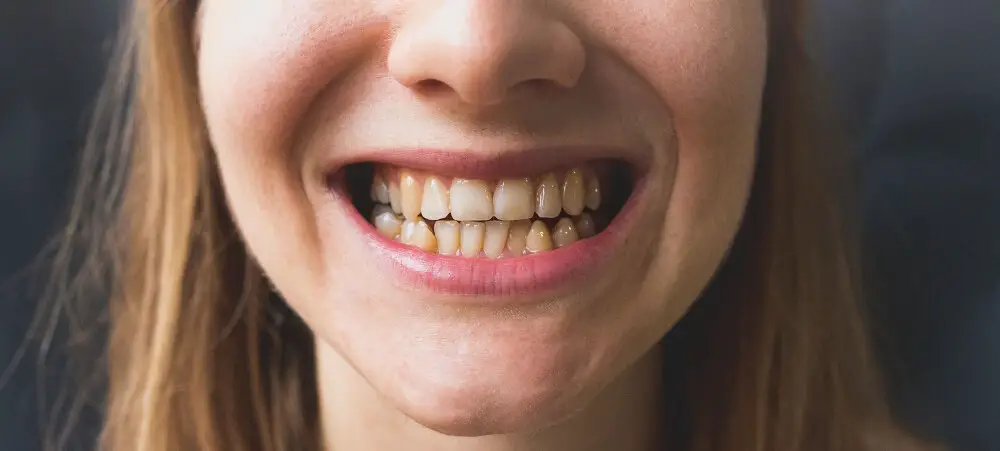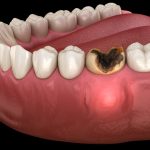Uncovering the Mystery: Why Beaver Teeth are Orange and What it Signifies?

Beavers are intriguing creatures that have fascinated humans for centuries. They are renowned for their ability to build dams and lodges, as well as their distinctive orange teeth. The question of why beaver teeth are orange has puzzled scientists and nature enthusiasts alike. In this article, we will explore the mystery behind this unique characteristic and what it signifies. The color of beaver teeth is not the only remarkable feature of these rodents. Their teeth are also incredibly strong and continuously grow throughout their lives. Beavers use their teeth to gnaw on trees and branches, which they then use to construct their dams and lodges. However, the orange color of their teeth has long been a topic of interest and curiosity. Some people have speculated that it is due to their diet, while others believe it is a result of a unique chemical composition. By delving deeper into the science behind this phenomenon, we can gain a deeper understanding of these fascinating creatures and their distinctive features.
Beavers are semi-aquatic rodents that are known for their impressive ability to construct dams, canals, and lodges in waterways. They utilize their strong teeth to cut down trees and branches to build their homes. What sets beavers apart from other rodents is their unique orange-colored front teeth, which are continuously growing throughout their lifetime. These incisors are composed of a hard outer layer of enamel that protects the softer inner dentin. The orange color comes from the high concentration of iron in the enamel, making these teeth incredibly strong and durable. Beavers’ teeth are critical to their survival and play a vital role in their ecosystem. They are a fascinating animal that continues to intrigue researchers and nature enthusiasts alike.
The orange color of beaver teeth has long puzzled scientists and researchers alike. For years, they have been unable to explain why the enamel of beaver teeth is a bright shade of orange. However, recent studies have shed some light on this mystery. It turns out that the orange color is due to the presence of iron in the enamel. This iron gives the teeth their characteristic color and also makes them incredibly strong and durable. In fact, beaver teeth are so strong that they can easily chew through thick tree trunks and other tough materials. This unique adaptation has allowed beavers to thrive in their environment and make a significant impact on the ecosystems in which they live.
What Causes Beaver Teeth to Turn Orange?

Beaver teeth are unique in many ways, and the fact that they turn orange is one of their most distinctive features. The orange coloration of beaver teeth is caused by the presence of iron in the enamel, which is a result of the beaver’s diet. Beavers are herbivores, and their diet consists primarily of tree bark, which contains a high concentration of tannins. Tannins are compounds that bind to iron, and when beavers consume bark, the tannins react with the iron in their teeth, causing them to turn orange. The orange coloration is not harmful to the beaver and is a natural occurrence. The orange coloration of beaver teeth serves a functional purpose. Beavers use their teeth to gnaw on trees and other objects, and the orange enamel provides protection against wear and tear. The enamel on beaver teeth is one of the hardest biological materials known, and the iron content contributes to its durability. Additionally, the orange coloration serves as a visual cue to other beavers, indicating their age and dominance. The darker the orange color of the teeth, the older and more dominant the beaver is, as they have had more time to accumulate iron in their enamel. Overall, the orange coloration of beaver teeth is an interesting and unique adaptation that allows them to thrive in their environment.
The enamel on beaver teeth is a unique feature that distinguishes them from other species. Unlike most mammals, beavers have an orange tint to their teeth due to iron content in their enamel. This iron-rich enamel is not only aesthetically distinct, but also highly functional. The enamel is incredibly hard and durable, allowing beavers to gnaw through tough materials such as wood and bark with ease. In addition, the enamel is self-sharpening, ensuring that the beaver’s teeth remain sharp and effective throughout their lifespan. This remarkable adaptation has allowed beavers to thrive in their natural habitat, and has made them an important contributor to the ecosystem.
The orange color of beaver teeth is due to the presence of iron in the enamel. Iron is a transition metal that is commonly found in the environment, and it can react with various chemicals to form different compounds. In the case of beaver teeth, iron combines with tannins from the wood that beavers chew on to form a complex compound that gives the teeth their distinct orange hue. This is a beneficial adaptation for beavers as it helps to strengthen their teeth and protect them from wear and tear caused by their constant gnawing. Additionally, the orange color may also serve as a signal to other beavers, indicating their age, health, and social status.
The process of iron getting into the enamel layer of beaver teeth is an intriguing phenomenon. The source of the iron is the bark of trees, which contains iron ions. Beavers gnaw on the bark of trees, and as they do so, the iron ions get absorbed into their bloodstream. The iron then binds to a protein called amelogenin, which is responsible for enamel formation. The iron-amelogenin complex then gets incorporated into the developing enamel layer of the teeth, giving them their distinctive orange color. This process is not fully understood, but it is believed that it may have evolved as a way for beavers to strengthen their teeth and make them more resistant to wear and tear. Regardless of the exact mechanism, the bright orange color of beaver teeth is a fascinating example of how nature can create unexpected and beautiful phenomena.
Significance of Orange Beaver Teeth

Beavers are known for their unique teeth, which are orange in color, and are often a subject of curiosity for many people. These teeth are not only unique in appearance, but they also serve a crucial function for the beavers. The orange color of the teeth is due to the presence of iron, which makes them exceptionally strong and durable. This allows the beavers to cut through trees and other tough materials with ease. The orange color of the teeth also helps to protect them from damage and decay, ensuring that they remain strong and functional for the life of the beaver. The significance of orange beaver teeth extends beyond their functional purpose. These teeth have become a symbol of resilience and determination, representing the beaver’s ability to overcome obstacles and adapt to new environments. The orange color of the teeth is also associated with creativity and innovation, as beavers are known for their ability to construct complex dams and lodges using their teeth as tools. Overall, the significance of orange beaver teeth is a testament to the remarkable abilities and adaptability of these fascinating creatures.
Orange teeth are advantageous for beavers as it indicates the presence of iron in their enamel. Iron is a vital mineral that strengthens the teeth and allows beavers to gnaw through wood with ease. Additionally, the orange coloration acts as a protective layer against the constant wear and tear of their teeth. This allows beavers to maintain their chisel-like incisors and continue their role as ecosystem engineers, shaping their environment to create habitats for other species. The unique adaptation of orange teeth in beavers highlights the importance of understanding the intricate relationships between organisms and their environment.
The orange color of beaver teeth has been a mystery for a long time, but recent research has shown that it may serve an important purpose in beaver society. Beavers use their teeth not only for chewing wood, but also for communication with other beavers. The orange color of their teeth is thought to help beavers identify each other, as it is a unique trait that is shared by all members of the species. This may be especially important for beavers that live in densely forested areas, where visual cues may be more difficult to discern. By having distinctive orange teeth, beavers are able to quickly identify members of their own species and communicate with them effectively.
Orange teeth in beavers may actually be a result of sexual selection, according to recent research. It is believed that female beavers prefer males with brighter and more vibrant orange teeth, as this indicates good health and genetic fitness. The orange color is caused by the presence of iron in the enamel of the teeth, which also makes them stronger and more resistant to wear and tear. This is important for beavers, as their teeth are essential for their survival, allowing them to fell trees and build dams. So, while orange teeth may seem like a strange trait to be selected for, it could actually be a sign of a strong and healthy beaver.
Other Animals with Unique Teeth Colors

While beavers are famous for their distinct orange teeth, they are not the only animals with unique tooth colors. One such creature is the narwhal, a type of whale that inhabits the Arctic regions. These marine mammals have a single, long tusk protruding from their upper jaw, which can grow up to three meters in length. Interestingly, the narwhal’s tusk contains millions of tiny tubes that transmit sensory information from the environment to its brain. The tusk also changes color over time, starting off pale when the animal is young and gradually darkening to a gray or brownish hue as it ages. Another animal with unique teeth colors is the hippopotamus, which has teeth that appear pink or orange. These massive herbivores have two long, curved canine teeth in their lower jaw, which can grow up to 50 centimeters in length. Despite their formidable appearance, hippo teeth are actually quite brittle and can break easily. To combat this, hippos have a constant supply of new teeth growing behind their existing ones, which can replace damaged or lost teeth as needed. While the exact reason for the pink or orange color of hippo teeth is not fully understood, it is thought to be due to the presence of pigments in the enamel or dentin layers.
While the orange color of beaver teeth is certainly unique, there are other animals with teeth that boast unusual hues. For instance, the bright yellow teeth of the frilled shark are quite striking, and the deep blue teeth of the blue-ringed octopus are equally impressive. The teeth of the narwhal, a type of whale, are also notable for their unusual coloration, as they have a mottled appearance that ranges from gray to dark brown. These animals all have teeth that are colored differently from what we typically expect, and each of them serves a unique purpose in the animal’s life.
Beaver teeth are unique in their own way, and they stand out from other animal teeth in several aspects. Unlike most animals, the beaver’s teeth continue to grow throughout its life. This growth is essential, considering that these rodents use their teeth to fell trees and build dams. The teeth are also an unusual orange color because they contain high amounts of iron, which provides the teeth with the strength and durability needed for their daily tasks. Additionally, beaver teeth are self-sharpening, thanks to their chisel shape that allows them to grind against each other. All these features make beaver teeth a fascinating study in animal biology, and their orange color serves as a clear indication of the unique adaptations that animals have to survive in their habitats.
There are several possible reasons for the unique tooth colors found in other animals, such as beavers. One reason could be due to the presence of different minerals or pigments in their diet, which can stain the teeth over time. For example, the orange color of beaver teeth is attributed to the iron-rich pigment present in the outer enamel layer. Another reason could be for communication or social signalling purposes, as tooth color can indicate age, health, or dominance status in some species. Additionally, tooth color may also play a role in camouflage or protection, helping animals blend in with their environment or deter predators. Overall, the specific reason for unique tooth colors in other animals may vary based on the species and their individual adaptations.
Conservation Implications

Conservation implications of the unique orange color of beaver teeth can be significant in terms of understanding the behavior and ecology of these animals. The coloration of beaver teeth is due to the presence of iron in the enamel that makes them more resistant to wear and tear. This adaptation allows beavers to chew through tough materials like tree bark and timber, which are necessary for constructing their dams and lodges. Therefore, understanding the chemical composition of beaver teeth can provide insights into the types of habitat and resources that are necessary for the survival of beavers. This knowledge can inform conservation efforts aimed at preserving beaver populations and their ecosystems. Moreover, beaver teeth can serve as an indicator of the health of freshwater ecosystems. As beavers are known to be a keystone species, their presence can have a significant impact on the structure and function of aquatic habitats. By monitoring the coloration and chemical composition of beaver teeth, researchers can assess the quality of freshwater systems and identify potential threats to the survival of beavers and other aquatic species. This information can guide conservation efforts to protect and restore freshwater habitats, such as controlling pollution and preserving riparian vegetation, which are critical for the survival of beavers and the health of freshwater ecosystems.
Understanding the unique properties of beaver teeth can play a significant role in conservation efforts. As beavers are known as nature’s architects, their teeth are crucial for their survival and the ecosystem they live in. The orange hue of their teeth results from iron in their enamel, which makes them incredibly strong and resilient, enabling the beavers to gnaw on hard materials. By examining the structure and function of beaver teeth, researchers can gain insights into how to improve and develop artificial materials with similar properties. This knowledge can aid in the creation of more durable and sustainable products, reducing the impact of human consumption on the environment. Furthermore, understanding the importance of beaver teeth can also help conservationists protect and restore beaver habitats, allowing these incredible creatures to continue their critical role in maintaining healthy ecosystems.
Beavers play a crucial role in maintaining the health and balance of ecosystems. Their dams help regulate water flow, creating wetlands that provide habitat for a variety of aquatic plants and animals. These wetlands also act as filters, reducing sediment levels and improving water quality. Additionally, beavers’ foraging habits and dam-building activities create diverse habitats that benefit a range of species, from fish to birds to mammals. The orange coloration of their teeth is a unique adaptation that allows them to continuously gnaw on tough materials like wood and bark, which is essential for maintaining their dam-building and foraging activities. Therefore, beavers are not only fascinating creatures but also important ecosystem engineers that contribute to the health and biodiversity of our natural world.
Conservation efforts aimed at preserving beaver populations can have a significant impact on the health and function of their teeth. Beavers rely on their teeth to cut down trees and build dams, which in turn creates habitats for a variety of other species. The orange color of their teeth is due to a unique iron-containing compound that strengthens them and gives them their characteristic sharpness. By protecting beaver habitats and ensuring they have access to healthy food sources, conservationists can help maintain the integrity of their teeth, allowing them to continue playing their crucial role in creating thriving ecosystems. Additionally, conservation efforts can help prevent the depletion of beaver populations, which would have negative ripple effects throughout the ecosystem.
The orange beaver teeth mystery has puzzled scientists and researchers for quite some time. Recent studies have revealed that the orange color of beaver teeth is due to the presence of iron in their enamel. This discovery has significant implications as it sheds light on the beaver’s ability to gnaw through wood with ease, despite the hardness of the material. The iron in their teeth acts as a natural filing system, allowing them to maintain sharp and efficient teeth for their wood-cutting needs. This unique adaptation offers insights into the remarkable ways in which animals can adapt to their environment and serves as a testament to the complex and intricate workings of nature.
Understanding unique animal characteristics is crucial for several reasons. First, it allows us to appreciate the diversity of the natural world and the fascinating adaptations that animals have developed to survive in their environments. Second, understanding these characteristics can help us better protect and conserve these species, as we gain insight into their behavior and needs. Finally, studying unique animal characteristics can also contribute to scientific knowledge, leading to new discoveries and innovations. In the case of beaver teeth, the discovery of their orange color and the significance of the iron-rich coating has shed light on the beaver’s ability to gnaw through tough materials and maintain healthy teeth. This knowledge can help us better understand and conserve this important species and its role in our ecosystems.
As we delve deeper into the fascinating world of animal biology, it is imperative that we take conservation efforts seriously. With the discovery of the significance of orange teeth in beavers, it becomes even more crucial to study and protect these incredible creatures. We must continue our research and exploration of the animal kingdom to uncover more mysteries and understand the importance of each species in our ecosystem. By promoting conservation efforts, we can ensure that these animals are protected and thrive in their natural habitats. Let us take action to preserve the beauty and diversity of our planet’s wildlife.
Conclusion

In conclusion, the orange color of beaver teeth is not just a mere coincidence but a result of evolutionary adaptations that have allowed these animals to thrive in their environment. The presence of iron in their enamel has been found to provide increased strength and resistance to wear and tear. Moreover, the orange coloration has been linked to the beavers’ ability to communicate with each other, as well as to their social status and overall health. By uncovering the mystery behind beaver teeth, we gain a deeper understanding of the complex ways in which nature has shaped these remarkable creatures. Through their teeth, beavers demonstrate the remarkable adaptability and resilience that has allowed them to survive and thrive in a constantly changing world.







